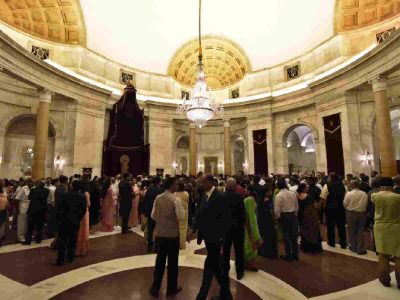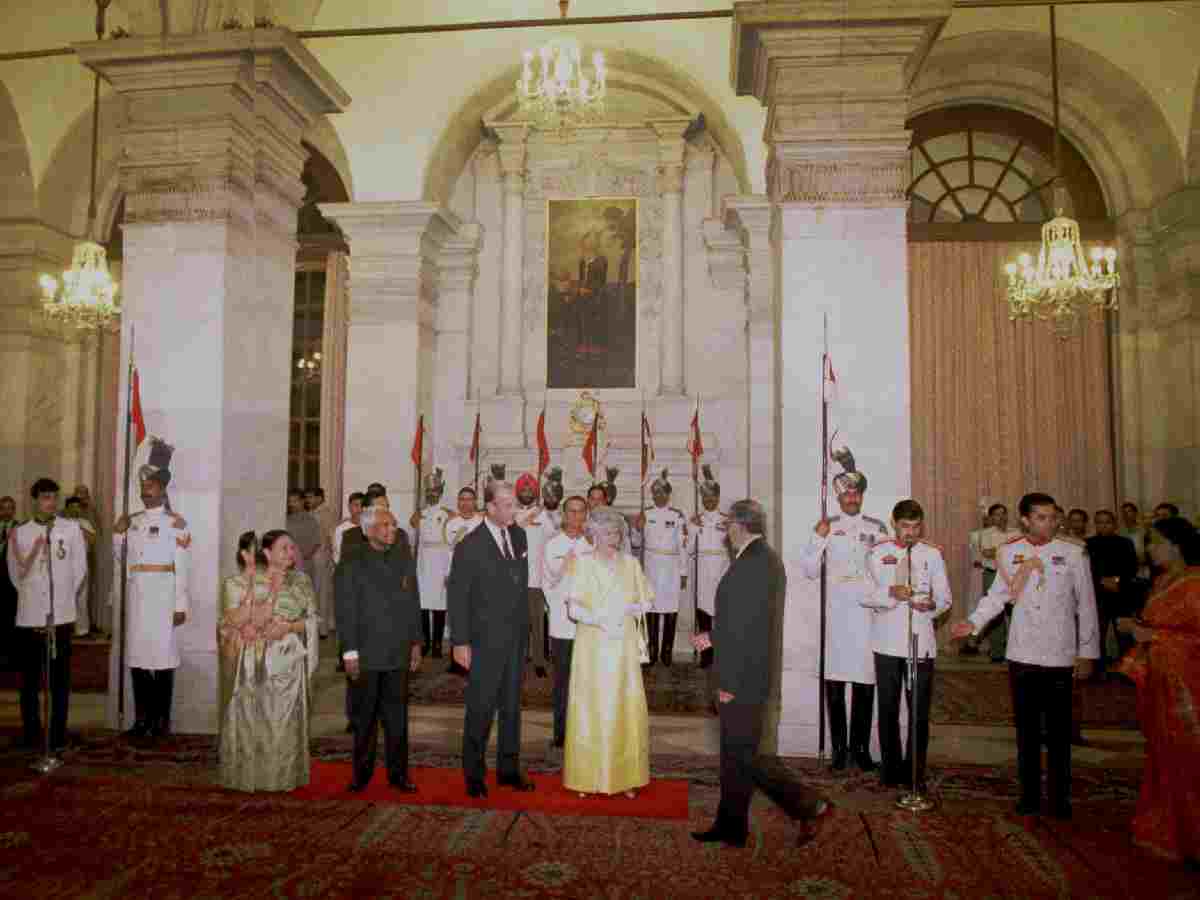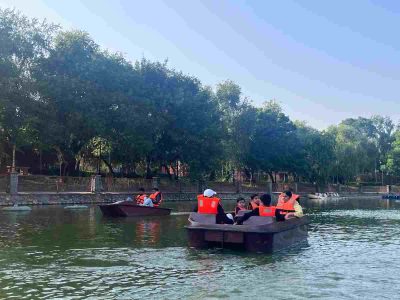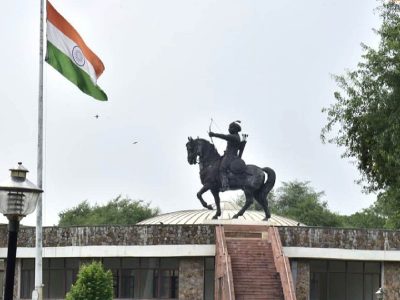The durbar Hall and Ashok Hall have held a special place within the majestic Rashtrapati Bhavan, which was built 95 years ago, in 1929.
However, the names of these halls have now been changed. According to a press release issued by the Rashtrapati Bhavan on July 24, the Durbar Hall will now be known as the ‘Ganatantra Mandap’ (Republic Hall), and the Ashok Hall will be called ‘Ashok Mandap’.
Buddha’s gesture of blessing
The Durbar Hall is undoubtedly the most majestic hall in the Rashtrapati Bhavan. It is here that all the Presidents of India, from Rajendra Prasad, the first President, to Droupadi Murmu, the current one, have taken oath of office. Jagdeep Dhankhar took the oath as 14th Vice President of India in a brief ceremony here on August 11, 2022.
Union Ministers have also been sworn in here.
Also read: Delhi: Roshanara Bagh to get a complete makeover by October end
The hall boasts a two-ton chandelier hanging at a height of 33 metres. During the British rule, it was known as the Throne Room while the Rashtrapati Bhavan itself was known as Viceroy’s House before the name was changed in 1950. There were two separate thrones for the Viceroy and his wife, which have now been replaced by a single chair for the President. It also houses a statue of Gautama Buddha in a gesture of blessing, dating back to the Gupta period (5th century).
The hall is used for state functions, Padma Award presentations, among other events.
“Even now both Durbar Hall and Ashok Hall have the stamp of colonial era. The furniture, carpets and chandeliers remind one of bygone era,” says noted author Raman Hitkari, who has also worked with President Ram Nath Kovind. It is said that one can have a lovely view of India Gate from the Durbar Hall.
Diplomats in the Ashok Hall
The Ashok Hall also holds significant importance. It is a rectangular room measuring 32 x 20 metres. It is here that High Commissioners and Ambassadors from different countries present their credentials to the President. Originally, it was built as a royal dance hall. It has a wooden floor, a central dance space, and three doorways. Unlike many other rooms and chambers in the Rashtrapati Bhavan, the ceiling of the Ashok Hall is decorated with paintings. These paintings are in Persian style. The main painting on the ceiling depicts a scene of royal hunting, while the corners feature scenes of courtly life. Most of the colours are dark. As the painting is done on leather, even the white colour appears slightly brown. This work was commissioned by Lady Willingdon during her husband Lord Willingdon’s tenure as Viceroy. Lady Willingdon also commissioned the construction of Lodi Garden.
Also read: Balban Tomb, Jamali Kamali monuments to undergo complete restoration this year
The other halls and its builders
There is also a banquet hall in the iconic building. It has a seating capacity of 104 people. The walls are adorned with portraits of all the past Presidents. The President hosts banquets for foreign heads of state here. It goes without saying that only the most prominent citizens of the country attend these events. There is no doubt that Lutyens was completely dedicated to designing all these halls.

Besides Edwin Lutyens and the chief engineer, Hughes Keeling, many Indian contractors also played a role in the construction of the Rashtrapati Bhavan. The road in New Delhi now known as Tolstoy Road was earlier called Hughes Keeling Road. It may be recalled that two Indian contractors, Haroon-al Rashid and Sardar Sobha Singh, were primarily involved in the construction of the Rashtrapati Bhavan. Rashid hailed from Lahore and returned to his hometown after the construction of New Delhi. Sobha Singh stayed here. He built a bungalow for himself at 1, Janpath.
How can we overlook those nameless labourers who tirelessly built the Rashtrapati Bhavan with their hard work? Most of the labourers who built it came from Jaipur, Jodhpur, and Bhilwara in Rajasthan, along with their wives. Initially, they were housed in the Paharganj area. Khushwant Singh mentions that these Rajasthani labourers were called ‘Bagdi’. They all came to Delhi on foot from their villages. These simple labourers were paid one rupee per day, while women labourers received eight annas. While most of the labourers came from Rajasthan, the stone carvers came from Agra and Mirzapur. Some also came from Bharatpur. They were skilled in carving stone and making jali work. They all contributed to the construction of the Rashtrapati Bhavan, including the Durbar Hall and Ashok Hall. Of course, we will now call them ‘Durbar Mandap’ and ‘Ashok Mandap’.




